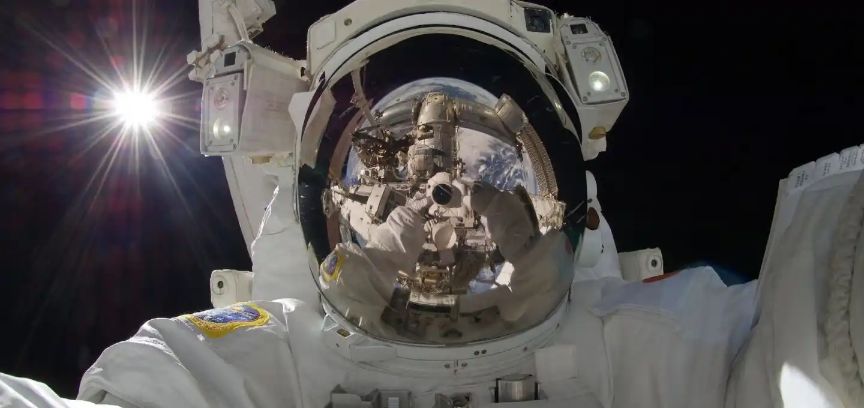Space Exploration and the Role of Technology
5 min read
24 Mar 2024
Space exploration has always captivated human imagination and curiosity. From the early days of launching satellites and sending astronauts to the moon to the current missions to Mars and beyond, technology has played a pivotal role in advancing our understanding of the cosmos. In this article, we'll delve into the importance of technology in space exploration and how it continues to drive the exploration of the final frontier.
1. The Evolution of Space Technology:
Space exploration has come a long way since the launch of the first artificial satellite, Sputnik, by the Soviet Union in 1957. Technological advancements have been at the heart of this progress, with innovations in materials, propulsion systems, communication, and navigation systems propelling us further into space.

2. Launch and Propulsion Technologies:
Rockets: Rockets are the workhorses of space exploration, and improvements in propulsion technology have allowed us to launch larger payloads into space, explore distant planets, and venture beyond our solar system.
Ion Propulsion: Ion propulsion systems, like those used on NASA's Dawn and Deep Space 1 missions, provide efficient and continuous thrust, enabling spacecraft to reach destinations with precision and reduce travel time.
Reusable Rockets: Companies like SpaceX and Blue Origin are pioneering reusable rocket technology, which promises to reduce the cost of accessing space and make it more sustainable.
3. Advanced Materials and Engineering:
Heat Shields: Heat shields made from advanced materials like carbon composites protect spacecraft during reentry into Earth's atmosphere, allowing for the safe return of astronauts and cargo.
3D Printing: Additive manufacturing is being used to create components and tools in space, reducing the need for payloads and enabling on-site repairs and production.
Nanostructures: Nanoengineering has led to the development of lightweight and durable materials that can withstand the harsh conditions of space, from extreme temperatures to radiation.
4. Communication and Navigation:
Satellite Networks: A constellation of communication and navigation satellites, such as GPS and the Global Navigation Satellite System (GNSS), enables precise spacecraft navigation and real-time communication with missions in deep space.
Deep Space Network: NASA's Deep Space Network (DSN) provides vital communication links to spacecraft exploring distant celestial bodies, ensuring data transmission and command reception.
5. Robotic Missions and Artificial Intelligence:
Robotic Explorers: Robots and rovers like Curiosity, Opportunity, and Perseverance have expanded our understanding of Mars. These autonomous machines are equipped with advanced sensors, cameras, and AI capabilities for decision-making.
Machine Learning: Machine learning algorithms are used to analyze vast datasets collected during space missions, helping scientists identify patterns, anomalies, and new discoveries.
6. Telescopes and Observatories:
Hubble Space Telescope: The Hubble Space Telescope has provided breathtaking images of distant galaxies and stars, expanding our knowledge of the universe and contributing to the discovery of dark matter and dark energy.
James Webb Space Telescope: The upcoming James Webb Space Telescope promises to be a game-changer in astronomy, with its advanced infrared capabilities allowing us to peer deeper into space and observe the earliest galaxies.
7. Planetary Exploration:
Mars Rovers: The Mars rovers, including Spirit, Opportunity, Curiosity, and Perseverance, have been instrumental in studying the Martian surface, geology, and climate. They are equipped with advanced instruments to search for signs of past or present life.
Venus Missions: Upcoming missions like NASA's VERITAS and DAVINCI+ will explore Venus using advanced technology, providing insights into the planet's geology, atmosphere, and potential habitability.
Jupiter and Saturn Missions: NASA's Juno spacecraft is studying Jupiter's mysterious interior, while the Cassini-Huygens mission provided invaluable data on Saturn and its moons.
8. International Collaboration:
International cooperation has played a significant role in space exploration, with agencies like NASA, ESA, Roscosmos, CNSA, and ISRO collaborating on missions and sharing technology and resources. The International Space Station (ISS) stands as a symbol of peaceful collaboration in space.
9. The Quest for Exoplanets:
Technology has enabled the discovery of thousands of exoplanets orbiting distant stars. Telescopes like Kepler and TESS have identified potential habitable exoplanets, fueling our search for extraterrestrial life.
10. Space Tourism and Commercial Ventures:
Advances in space technology have paved the way for the commercial space industry. Companies like SpaceX, Virgin Galactic, and Blue Origin are working to make space tourism a reality, while private ventures are exploring asteroid mining and lunar colonization.
Challenges and Future Prospects:
While technology has driven significant progress in space exploration, challenges remain:
Space Debris: The proliferation of space debris poses a threat to space missions and satellites. Technology is needed to track and mitigate debris.
Deep Space Travel: Crewed missions to Mars and beyond require advanced life support systems, radiation protection, and propulsion technology capable of long-duration space travel.
Sustainability: Sustainable practices and technologies are essential to minimize the environmental impact of space exploration and mitigate space debris.
International Collaboration: Continued cooperation among space agencies and nations is crucial for addressing global challenges and sharing the benefits of space exploration.
In conclusion, technology has been the driving force behind the remarkable achievements in space exploration. As technology continues to advance, we can look forward to even more ambitious missions, from sending humans to Mars to exploring distant exoplanets and understanding the origins of the universe. Space exploration is not just a quest for knowledge; it is a testament to human ingenuity and the boundless possibilities that technology unlocks in our pursuit of the final frontier. With international collaboration and ongoing innovation, the future of space exploration holds the promise of answering some of the most profound questions about our universe and our place in it.



